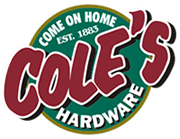
Unlocking the Power of Effective Communication for Enhancing Profits and Customer Experience.
A common scenario in a large retail firm: The president of a division boasting over 200 stores acknowledges a prevalent communication issue, only to pass it off as an inevitable consequence of being part of a large-scale enterprise.
This casual acceptance can seem bewildering, as effective communication is a cornerstone for maintaining profitability and customer satisfaction.
A surprising number of retail leaders underestimate the power of proper communication.
They lack a systematic approach that guarantees prompt and precise information delivery to their on-ground teams.
They disregard communication as a critical aspect that could have significant implications for their operations.
Mediocrity in their communication practices is often justified by the scale of their operations.
This raises a thought-provoking question: Does this indifference permeate other crucial facets of their businesses, like product quality and customer service?
Does it bleed into their hiring processes or commitment to labor standards? Does being ‘large’ imply inefficiency, ineffectiveness, and unwieldiness?
The lackluster customer service in numerous retail stores isn’t a secret to consumers.
There are exceptions, of course, with some retailers providing commendable service and respectful treatment. However, the vast majority have room for improvement.
This indifference could stem from leadership apathy. The onus of providing excellent service lies primarily on the shoulders of the upper management.
Imagine an experienced, customer-oriented store manager.
She is committed to delivering a pleasing shopping experience, ensuring a return on investment for stakeholders, and providing for her family.
Contrary to what some might believe, such dedicated individuals do exist in retail. Regrettably, their significant contributions often go unnoticed by their superiors.
Accurate and timely communication, inclusive of training, is vital for these store managers to excel in their roles.
However, they often find themselves near the bottom of the priority list when it comes to receiving crucial information, with store associates placed even lower.
This communication disconnect can significantly impact daily customer interactions.
It contributes to a series of problems customers face in retail stores and can lead to dissatisfied customers.
Consider this: A customer receives a promotional offer in the mail but discovers that the store staff is unaware of the promotion.
The response of the store personnel can either alleviate or exacerbate the customer’s frustration.
If mishandled, the customer leaves the store unhappy and inconvenienced, having wasted time and holding a grudge against the retailer.
Repeated instances of miscommunication can lead to high employee turnover.
Employees dread the prospect of appearing clueless or being hounded by dissatisfied customers, eventually leading them to lose faith in the company and look for other opportunities.
Furthermore, miscommunication can result in lost sales.
Without crucial product information, like features, delivery schedules, and pricing, store associates are ill-prepared to advise customers effectively.
Armed with the right information, associates can positively impact customer buying decisions.
The root of almost every issue encountered in a retail store, barring possibly impolite behavior, can be traced back to ineffective communication.
It’s high time retailers acknowledged the significance of communication and dispensed with mediocrity, regardless of the size of their organizations.
It’s time for the higher-ups in these large enterprises to understand the critical role played by store staff in driving sales and ensuring customer satisfaction.
[embedyt] https://www.youtube.com/watch?v=jNK6LnMbFjE[/embedyt]
















































































